Why Is My Cat Hiding? 5 Reasons Why & How To Find Them
Most cats snuggle up in hidden places once in a while. But what if your cat hides from you all the time? Let’s explore some reasons and solutions to this feline behavior.

Whether you’ve had them for years or just adopted them, a cat hiding from you can be both cute as heck and confusing all in one.
So if you’re finding yourself wondering, ‘Why is my cat hiding in the cabinet, behind the sofa, in a bag, or in the washing machine?’, the reasons range from relatively harmless – to more serious.
Because while a new adoptee might hide from you because of well, stage fright – a cat hiding can also signal that something is wrong. I.e., they might not be feeling well, or are dealing with stress from big changes like a move, illness, or even pregnancy.
So here are some of the major reasons why cats hide, the easiest way to find a hiding cat, and what you can do to prevent your cat from hiding in the first place.
Is it normal for a cat to hide?
Yes, and for the most part, it’s completely normal feline behavior. But if you’re noticing your cat hiding more often than usual or showing any other changes in behavior, it might be worth observing them more carefully.
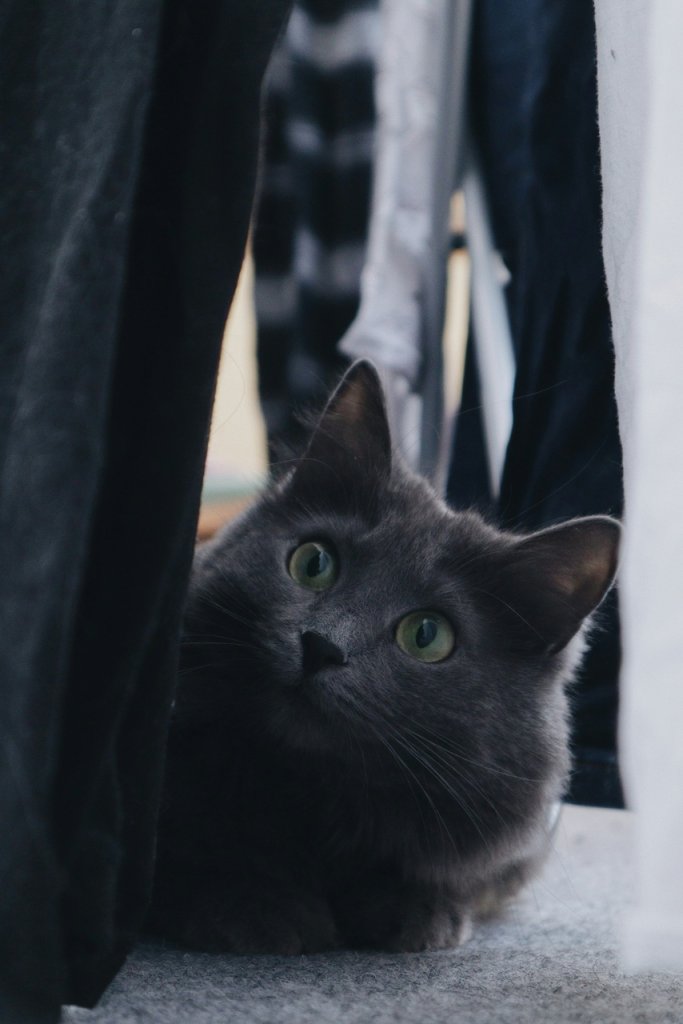
Now some cats are bold and others are shy, but nearly all cats have a natural affinity for small spaces.
These cozy spots offer warmth, safety, and comfort as a cat snoozes the day away.
A hiding place that allows your kitty to slyly observe household activity is even better. And a location just out of your reach is the best of all!
This is typical feline behavior, and most cats will emerge from their hiding place and allow you to shower them with affection once or twice a day. And remember that your cat may be roaming the house at night, while you are asleep.
Read more: Why Do Cats Like Boxes? The Purr-Fect Mystery, Explained
⚠️ But if your cat suddenly starts hiding all the time and refuses to interact with you, there may be something wrong.
Why is my cat hiding all of a sudden?
When your cat begins spending most of their time hiding, it could be a sign of anxiety, stress, or illness. For example, you might find your cat hiding as a result of:
1) Being the new kid in town
When you bring a new cat into your home, it’s perfectly normal for the new kitty to hide. It needs time to become accustomed to its new environment.
To help your cat adjust, create a safe zone for them. This is where your cat be separated from the rest of the home, such as a guest bedroom.
- Place a tall baby gate across the door.
- Visit your new kitty throughout the day.
- Allow them to explore the room alone for a day or two before integrating them into the house.
- They’ll gradually get more comfortable and will soon have the run of your house!

Read more: New Kitten Checklist: How To Prepare for Your New Cat
2) Dealing with a move
If your family moves to a new home, this can be a very stressful time for your cat.
Before moving day, make sure your cat is wearing their ID tags, is microchipped, and ideally, is wearing a GPS tracking collar.
- You can safely transport your feline friend to the new home in a pet carrier.
- Once inside your new place, keep your kitty in the closed pet carrier to avoid a dash out the wide-open front door amid the commotion of move-in day.
Read more: How To Travel With A Cat: Tips For A Fun, Safe Road Journey
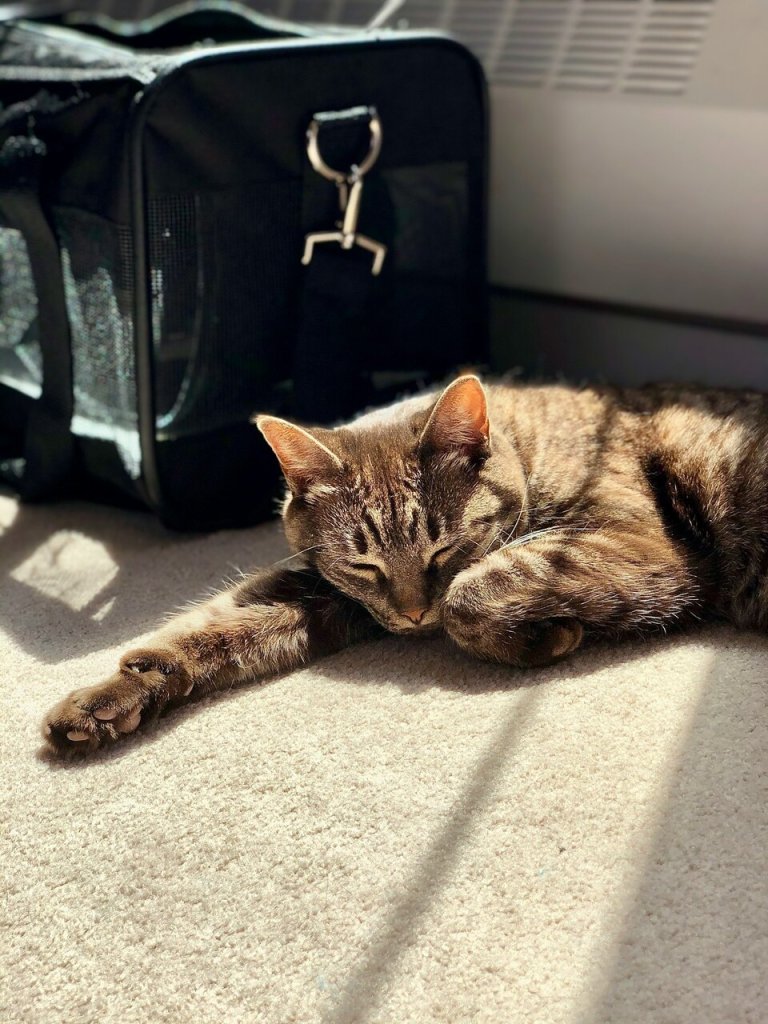
Once the movers have gone, chose an empty room as the cat’s safe zone.
- Place your cat’s food and water bowls, bedding, and the open pet carrier in the room with your cat.
- Use a baby gate across the door. (So that your cat can still venture out, but isn’t bothered by your kids.)
- Visit your cat a few times during the day.
- Tell the kids not to leave the gate open!
Your cat will gradually relax as they get used to the smells and noises of the new house.
Read more: Your 100% Stress-Free Guide To Moving Cats To A New Home
Finding a hiding cat: Where a GPS tracker can come in handy
If the worst case scenario happens, your cat might bolt out the door into your new neighborhood. Where there’s no shortage of dangers they might run into. (From passing cats, other pets, or just getting lost.)
💡Which is where – in addition to an ID tag and microchip – a cat GPS tracker can be a lifesaver.
Why? Because with one strapped to your cat’s collar, you now have a sky full of satellites helping you track them down – no matter how near or far. (Plus, in real-time.)
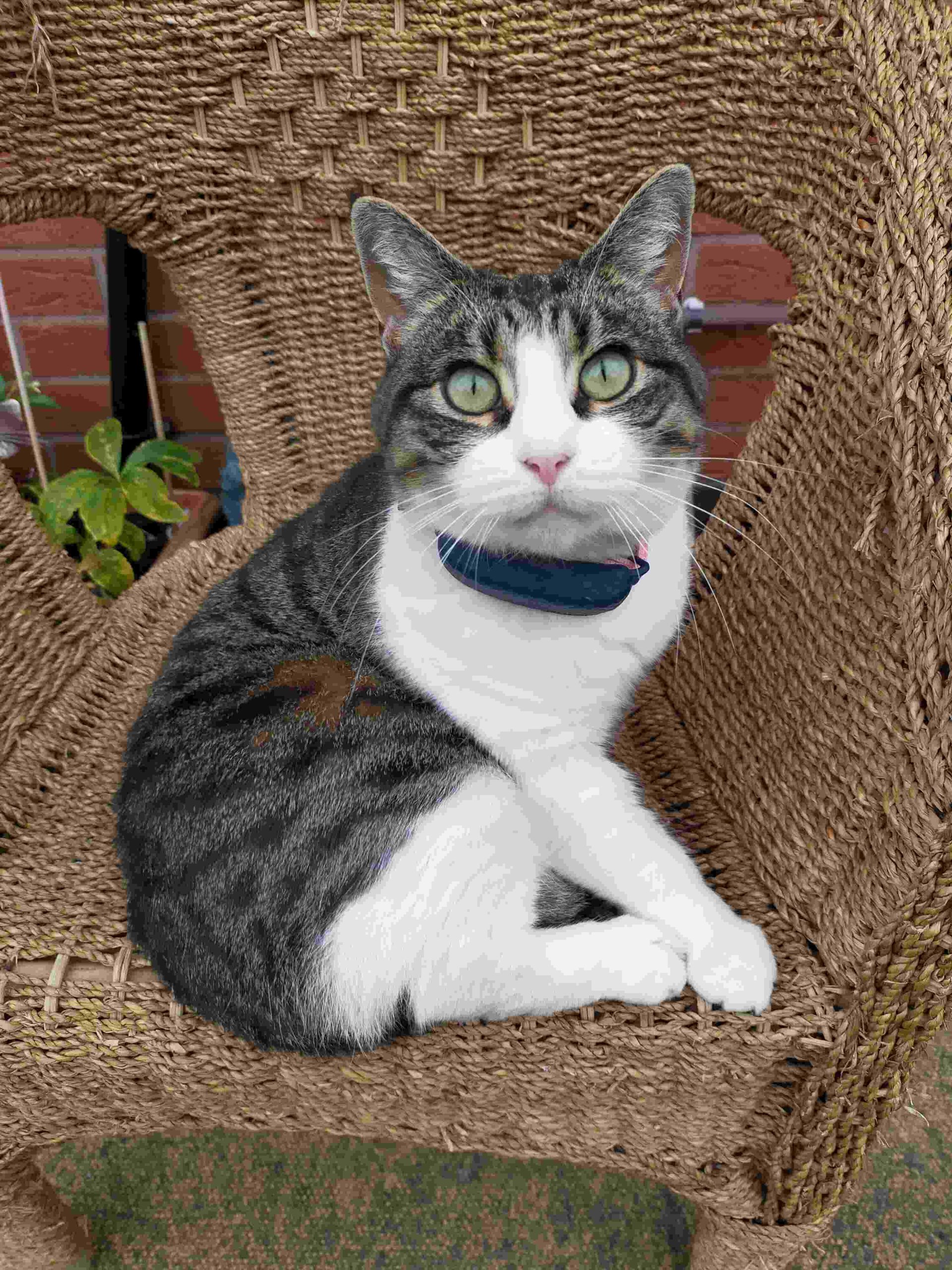
With the Tractive GPS tracker, you can also access your cat’s Location History – or the spots they like to hide in best.
Or you could set up a “safe zone” for your cat – and immediately get an escape alert if your cat wanders past it. So you can intervene and pick them up immediately and keep them safe from any danger.
Or you could track your cat in real-time – no matter where you are in the world. So you can always intervene and find them, no matter where they’re hiding.

3) Being pregnant
If you have an unspayed female cat that suddenly goes into hiding, it’s possible she could be about to deliver a surprise litter of kittens. (Which is why it’s important to have your cat spayed or neutered.)
A few days before giving birth, a pregnant female cat will select a cozy spot to deliver her kittens. –
- This might be under a bed, in a closet, or behind a sofa.
- In the wild, females giving birth are vulnerable to predation, so the hiding instinct is essential for survival.
Set food, water, and a litter box nearby so the new mama doesn’t have to leave her kittens for the first few days.
Read more:

4) Being sick
Cats often seek out hiding places when they are sick or injured. This is a behavior rooted in their evolutionary history – i.e., what wild cats might do.
Because in the wild, a sick or injured animal is an easy target for predators. So hiding is a protective maneuver by your cat.

Why is my cat hiding and not eating?
Is your cat not eating in addition to hiding and refusing to play or interact? Then they may be ill or hurt. If this hiding behavior continues for a few days, take them to the vet for a checkup.
Also, if you have an outdoor cat that stops showing up at mealtime, they could be sick or injured.
Read more:
- Cat not eating? Find out the potential reasons why and get your cat to eat again
- How To Tell If Your Cat Is Sick: Signs Your Feline Friend Isn’t Feeling Well
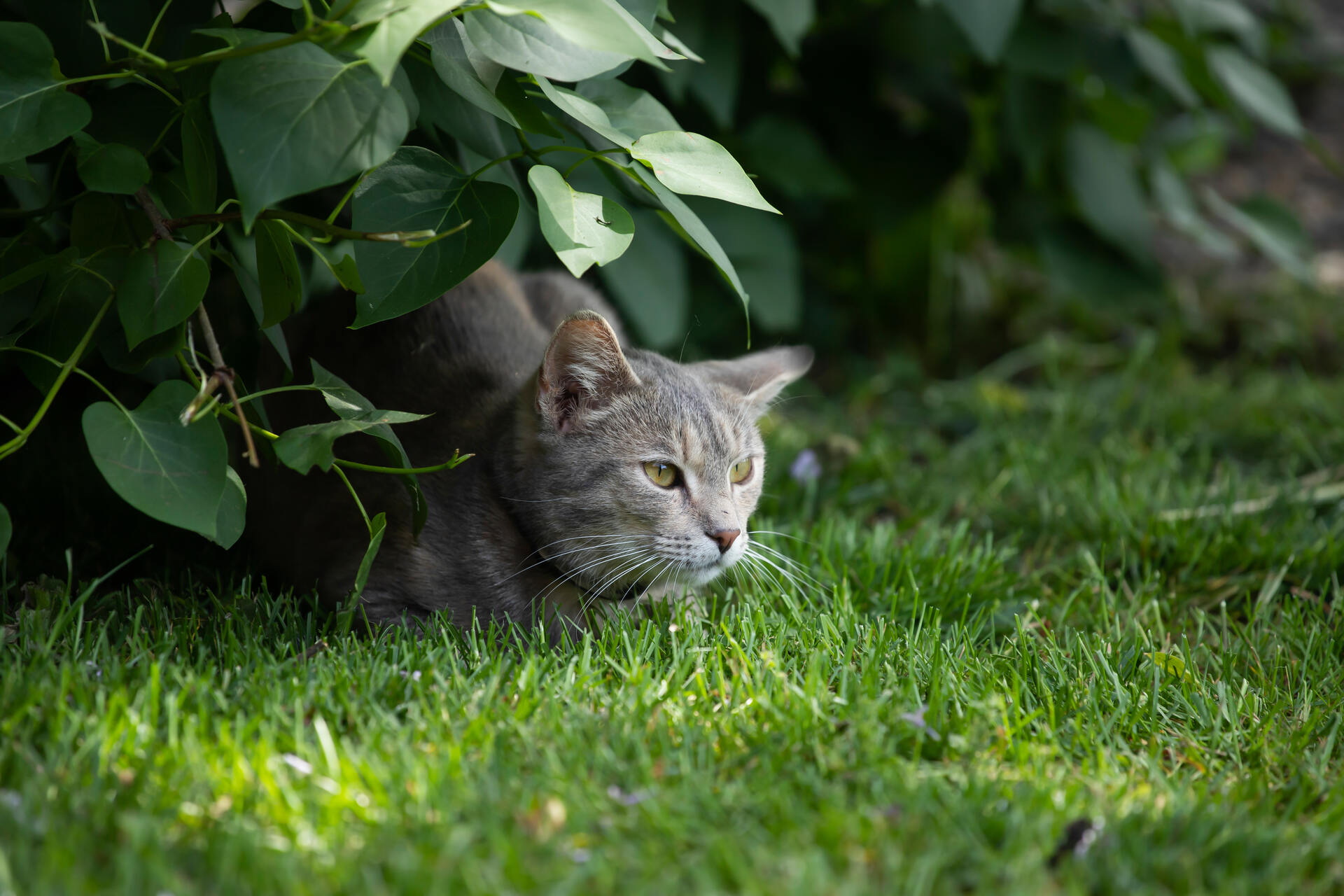
💡But if you’ve invested in a Tractive device, you can map out your cat’s territory – with just a glance at your phone. Here’s how it might look – marked in yellow:
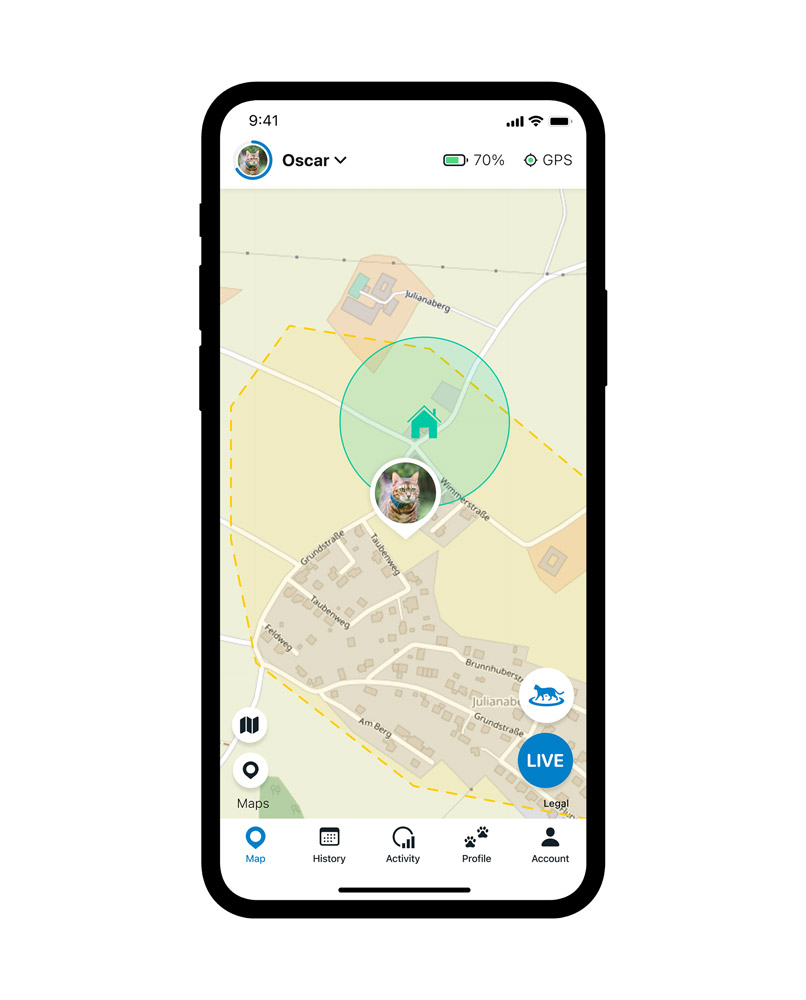
Which, with time, can help you figure out which spots around town fall into your cat’s territory.
Aka, where they might end up hiding if they’re sick, injured, or just struggling with pain.
Read more: Cat Territory Size & Range: How Far Does Your Cat Roam?

Figure Out Your Cat’s Territory
5) Dealing with a big change
Any change in their environment, no matter how small, can cause anxiety for your cat and cause them to seek out a safe, comfortable place.
For example, it’s not unusual for your cat to hide when you have a houseguest.
- This strange person may carry the smell of a dog, for example, which can set off alarm bells for your kitty.
- If your cat hides from a visitor, there’s no need to worry – a few hours after the coast is clear, your cat will emerge as if nothing happened.
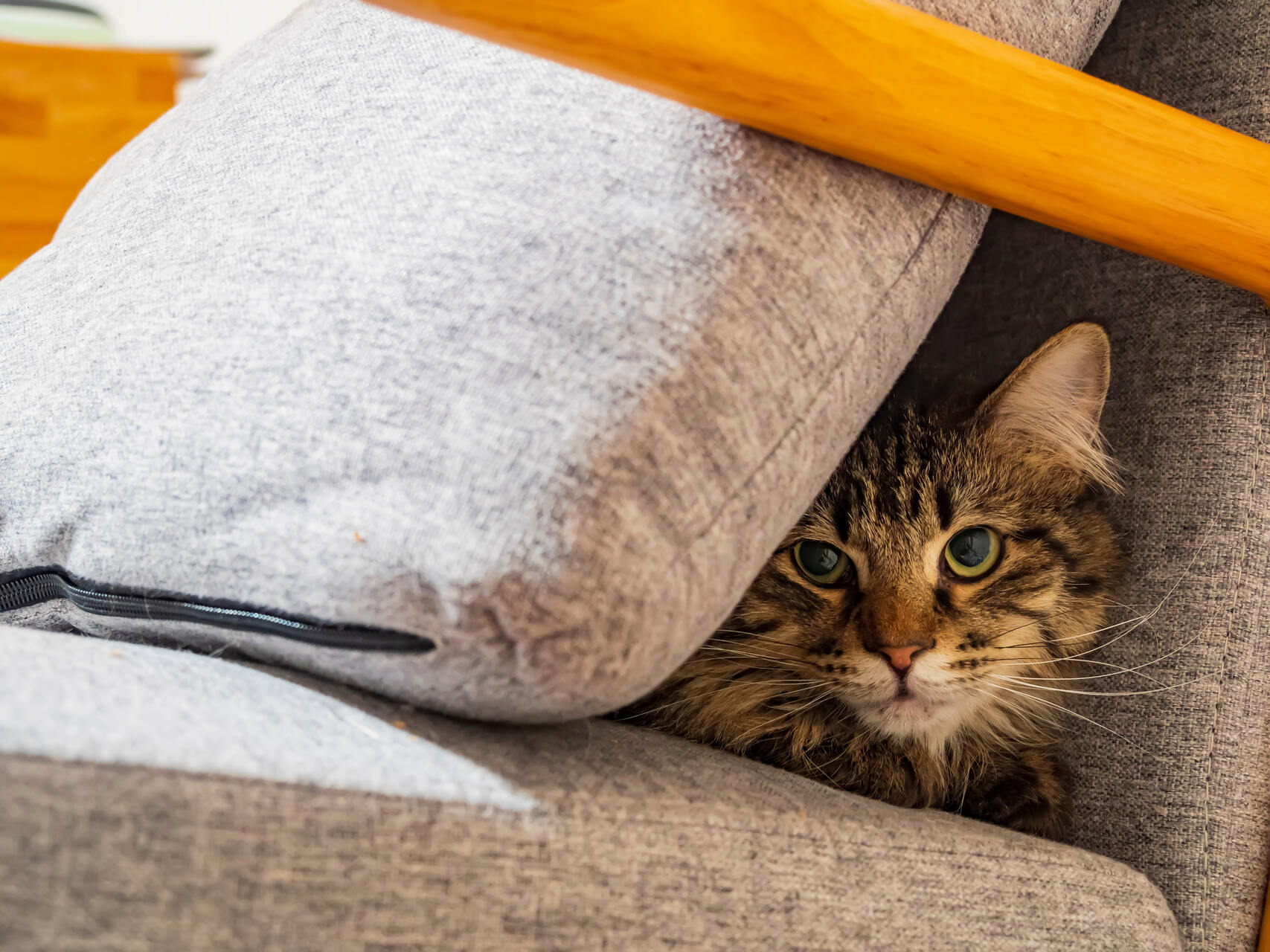
If a new person moves in – say a newborn baby, or a new housemate – your cat may retreat to their favorite hideout.
- When it becomes clear that this new individual is here to stay, your kitty will gradually return to their normal habits.
- Allow the new person and your cat to get to know each other on their own terms. Don’t force an interaction on either one of them.
Other disruptions – such as a change in your work schedule, a vacation, a cat-sitter, or a new pet in the home – can also induce hiding behavior as your cat seeks safety and security. Allow your kitty time and luxury of an undisturbed safe space as they adjust.
What are some preferred cat hiding spots?
Cats may choose some very odd places to hide, but most of these spots are away from the hubbub of your home or neighborhood; consist of a small, dark, enclosed area; include a window or opening that the cat can peek out of; and are often elevated so the cat can survey their surroundings.
Examples of indoor cat hiding places include:
- Under or behind furniture or beds
- In closets or cabinets
- On top of wardrobes, cabinets, or appliances such as refrigerators
- In washing machines or dryers
- Behind furnaces or water heaters
- In bins, boxes, or baskets (including full laundry baskets)

Outdoor cats may hide in:
- Sheds, workshops, or garages
- Among tall, leafy garden plants
- Under the hood of a car, or in a wheel well
- Under decks or porches

💡 Besides real-time tracking over an unlimited range outdoors, your trusty Tractive device also helps you locate your cat indoors!
With its Bluetooth-powered Radar Mode, Augmented Reality, or Light & Sound features, you can quickly and easily locate your cat at close range – no matter what nook or cranny they’ve stuffed themselves into.

Plus, if you notice your cat heading somewhere dangerous outdoors…
You can mark these spots as “danger zones” on your Tractive app – especially if you notice they’ve got:
- Plants poisonous to cats
- Poison bait for woodland animals, which your cat might eat or taste instead
- Animal traps
- Dangerous wildlife
- …and anything else you’d rather not have your hiding cat run into when outdoors.
Your danger report also gets broadcast to other pet parents in your area. So you can both keep your hiding cat safe – and do your part as a responsible pet parent.
How long will a cat stay in hiding?
A cat that’s chosen to hide because of stress or anxiety will remain hidden until the cause of their stress or anxiety goes away.
If the stress is caused by a human or animal visitor, your kitty will come out of hiding an hour or two after the visitor departs.
If the hiding behavior is caused by moving to a new home, it may take a few days or even weeks before your cat feels comfortable enough to explore their new space confidently.

Just be patient and place fresh food and water near the cat’s hiding place. Don’t hover nearby and wait for your cat to emerge. It’s better to leave the room and allow your cat to come out when they are comfortable.
A sick or injured cat may need to be removed from hiding. If you are placing food and water nearby but it goes uneaten for 1-2 days, it may be time to gently retrieve your cat and visit the veterinarian for a checkup.
How to find a hiding cat
Many cats will come out of hiding on their own and return to you once they feel comfortable and safe again.
However if your cat is sick, injured, or lost, you’ll need to know how to find the hidden cat yourself.
And as it turns out, a microchip can only help someone (like a vet) identify your lost cat.
When it comes to actually finding them, your best bet is a dedicated cat GPS tracker – so you can track them in real-time and know exactly where to find them.

Know everywhere your cat goes
See where they are in real-time, no matter how far they go. Get alerts if they roam too far home. Find out where they’ve been and discover their favorite spots. Let others track with you.

“Tractive is the #1 cat GPS tracker in the industry. And it’s the highest quality cat tracker you can find. I was able to set the safe zone as my house area and once my cat gets outside I get an alert right away.
In fact, it probably saved my cat’s life that time she chased a bird and got lost. She was scared and I was able to find her with the help of the GPS tracker.
Tractive’s chip frequently calculates your cat’s location and is updated on the map every 2-3 seconds. Furthermore, the LED will help you guard your furry friend at night.”
– Clair Chesterman, Owner of CFA and CCA-registered cattery and fostering company, FluffyMeowPaws
Read more:
- How Long Do Cats Go Missing For? And Why?
- How To Find A Lost Cat: All You Need To Know
- Why Do Cats Run Away? 10 Reasons + How To Stop ‘Em
- Is A Microchip Cat ID Enough To Find Your Lost Cat?
Help your cat feel more comfortable
Cats that are naturally shy in new environments. They often need time and patience for their anxieties to diminish. But there are a few things you can do to support your cat during a stressful life event, or calm a cat who is naturally timid.
1) Create a comfortable home environment
Give your cat ample opportunities to be alone if they need it. Constantly being chased by children or other pets can be very stressful. If your kitty slips under the bed for a few hours, that’s understandable.
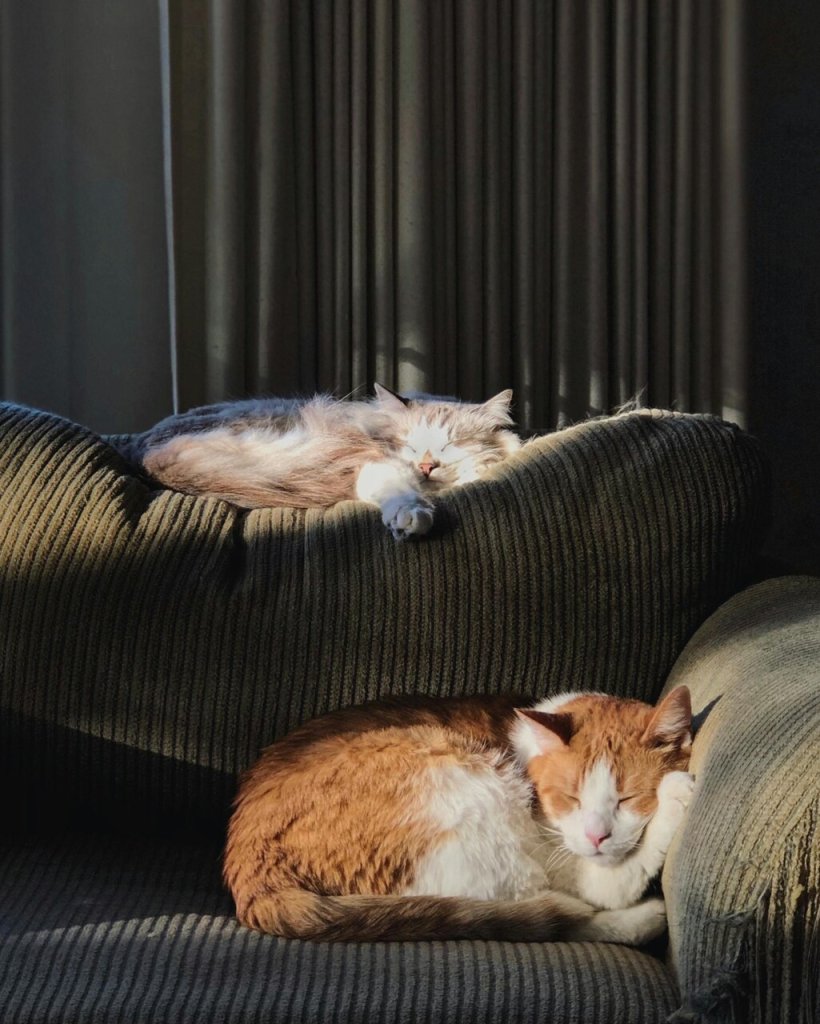
If you have more than one cat, pay attention to their interactions. Sometimes a dominant cat will antagonize a more laid-back kitty, creating undue stress.
Give your cats multiple places to retreat so they don’t always need to be together.
2) Use a calming diffuser
Commercially available diffusers release chemicals that mimic natural pheromones emitted by cats. These pheromones communicate calmness to other cats. You can plug a diffuser into a wall socket near your cat’s favorite hideout to help them feel less anxious.
The diffusers work over time to calm your cat and can be useful when your cat’s environment is disrupted, such as moving to a new house or a new person living in your home.
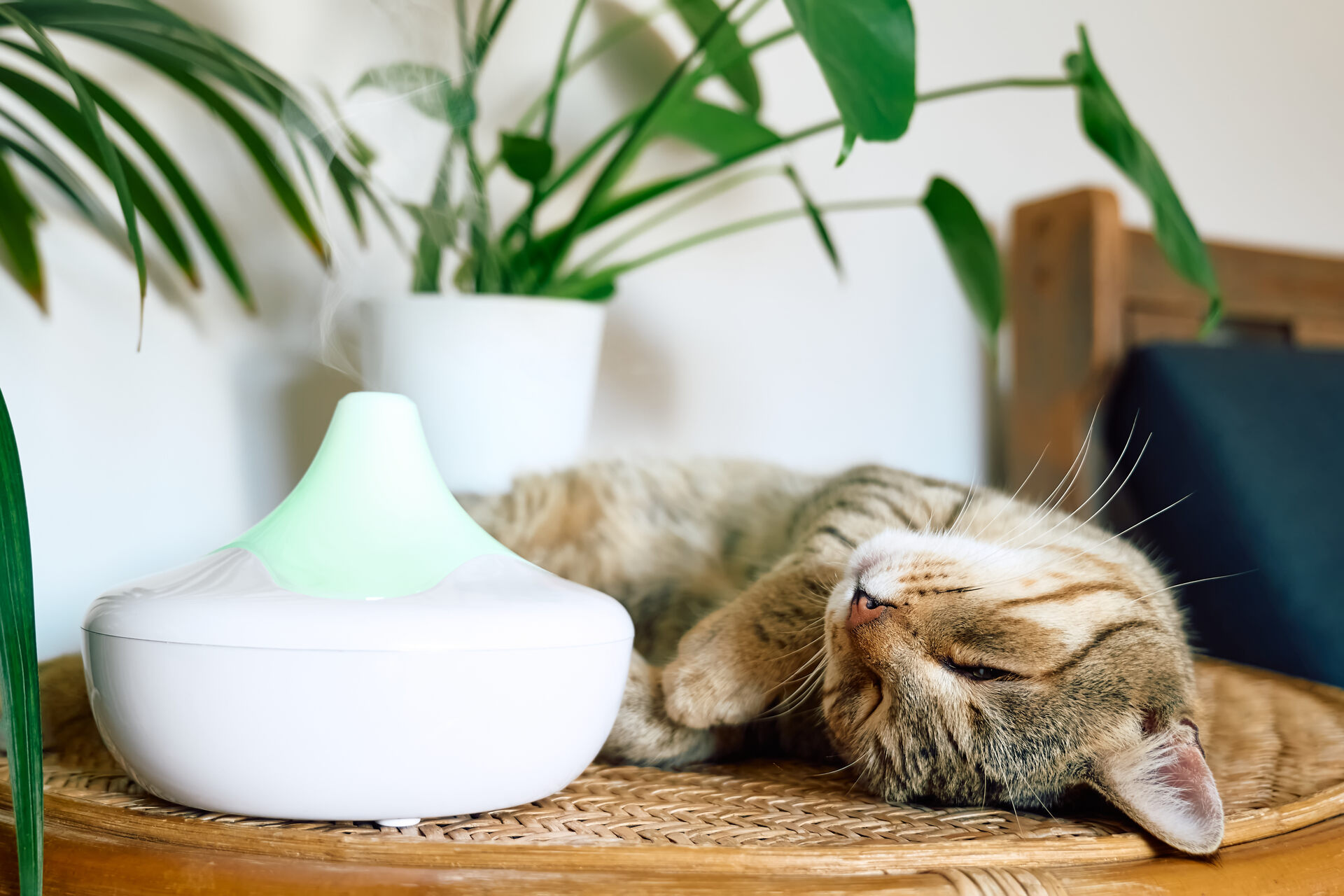
3) Reinforce positive behaviors
By gently playing with or petting your kitty when they come out of their hiding spot, you can help them feel safe in your presence.
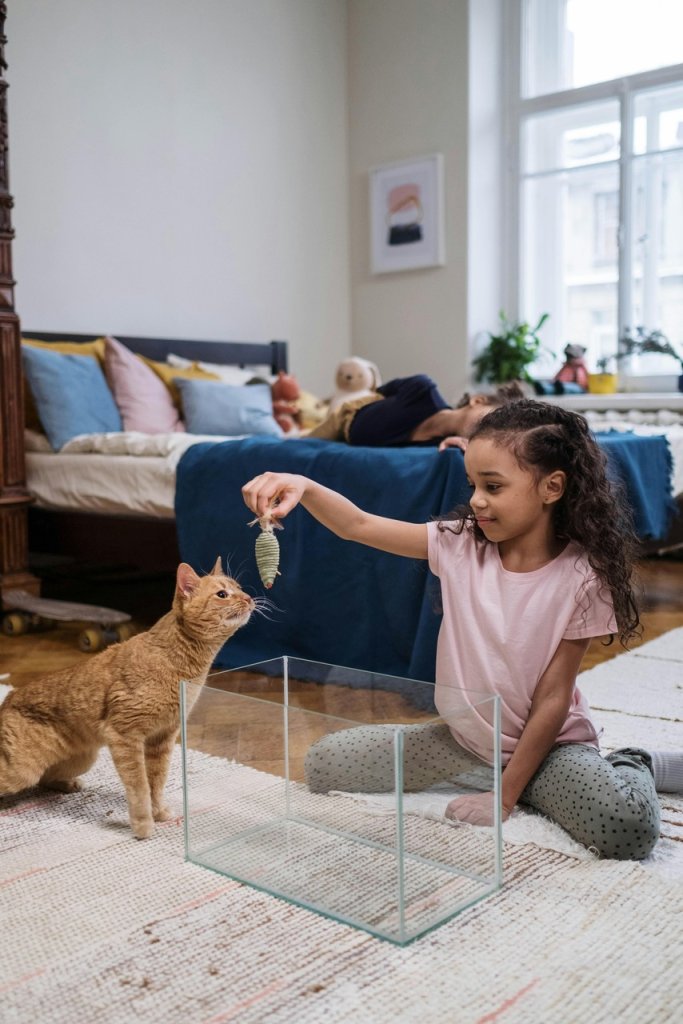
Start by offering them treats or their favorite toys. Make their time with you as pleasant as possible and they’ll be eager to come out of hiding more often.
4) Make sure your cat doesn’t feel trapped
Cats, like most animals, feel safe when they have an escape route. Avoid closing doors and making your cat feel trapped – this will only increase their anxiety. Work on creating a safe and comfortable home for your cat.
5) Check with a vet
If your cat just won’t come out of hiding, make an appointment with your veterinarian. There may be an underlying health issue that needs to be checked out.

How do I get my cat out of hiding?
Generally, the harder you work to get your cat out of hiding, the more they will resist you. Patience is a must. In most cases, it’s best to walk away and let the cat come out on its own terms if you aren’t in a hurry.
If you absolutely must get your cat out of hiding because you’re going to a veterinary appointment or heading out of town, here are a few ideas:
- Keep the surroundings calm: Have your kids and other pets leave the room. There’s no need for every member of the family to call Fluffy’s name at top volume.
- Use food to lure kitty out of hiding: Leave a trail of your cat’s favorite treats, or pull out all the stops and open a can of tuna. Condition your cat to receiving treats by shaking the bag before offering the goodies. This way, your cat associates the sound of the shaking bag with getting treats, and may come out of hiding when you simply shake the treat bag.
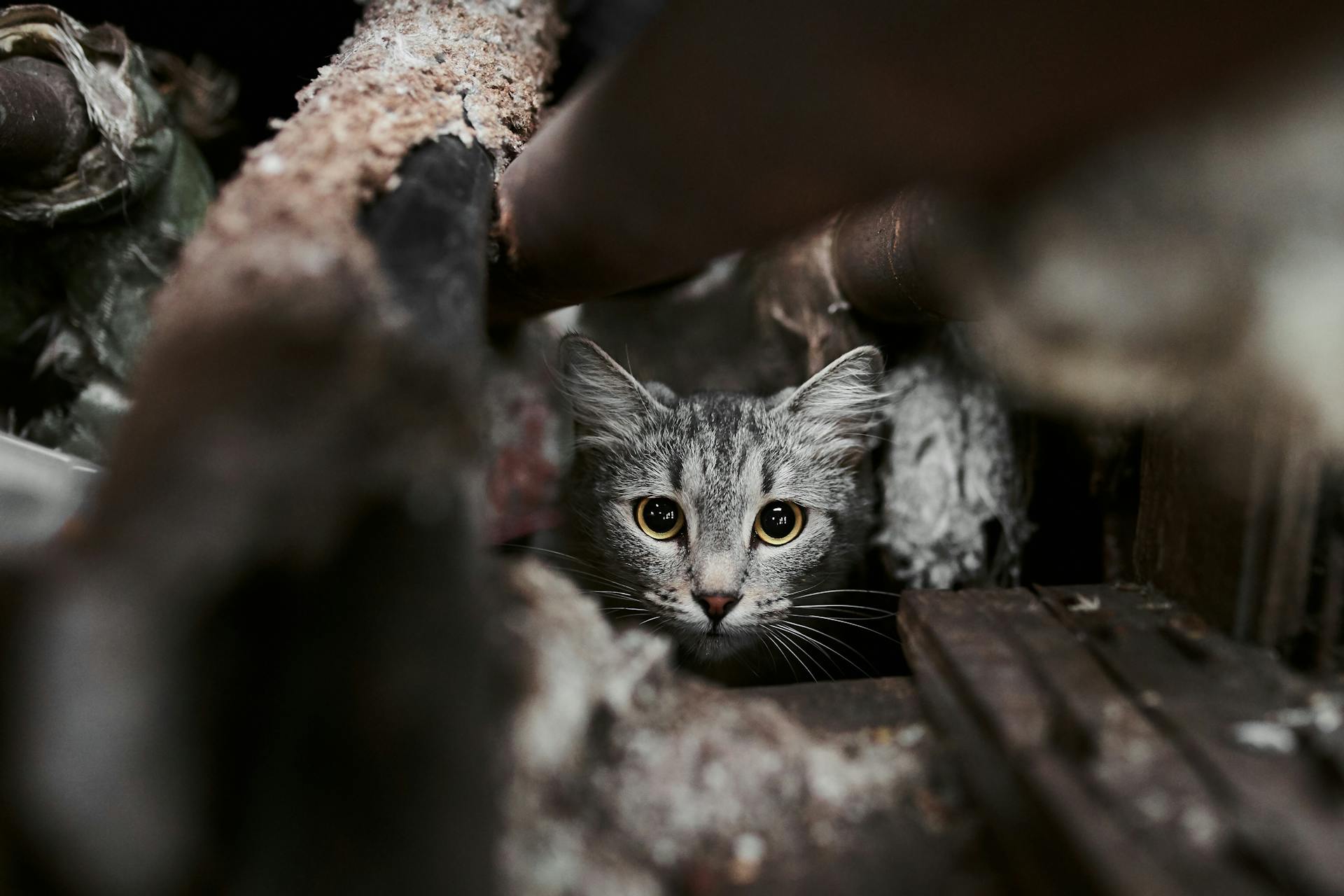
- Employ a favorite toy: Pull a string or drag a wand-style toy across the entrance to the hiding spot. Only the most reticent cat can resist.
- Catnip for the win: Catnip, especially fresh catnip, is irresistible to cats. Rub some on a favorite toy and place it just outside kitty’s hiding place. They’ll be out of hiding in no time!
And in an emergency…
- Hit ‘LIVE’ on your Tractive device – and track down your cat in no time.
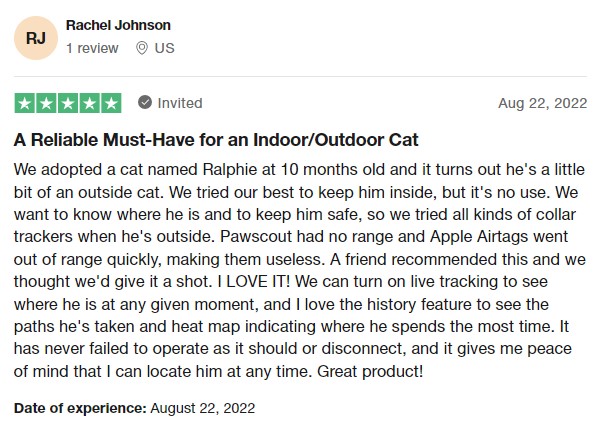
Want to get another expert perspective? Here’s Dr. E’Lise Christensen, explaining how to deal with a cat that’s always hiding:
And if you’ve liked this post, share it with a friend or a loved one – and let’s help build a safer, kinder world for our furry friends together.




